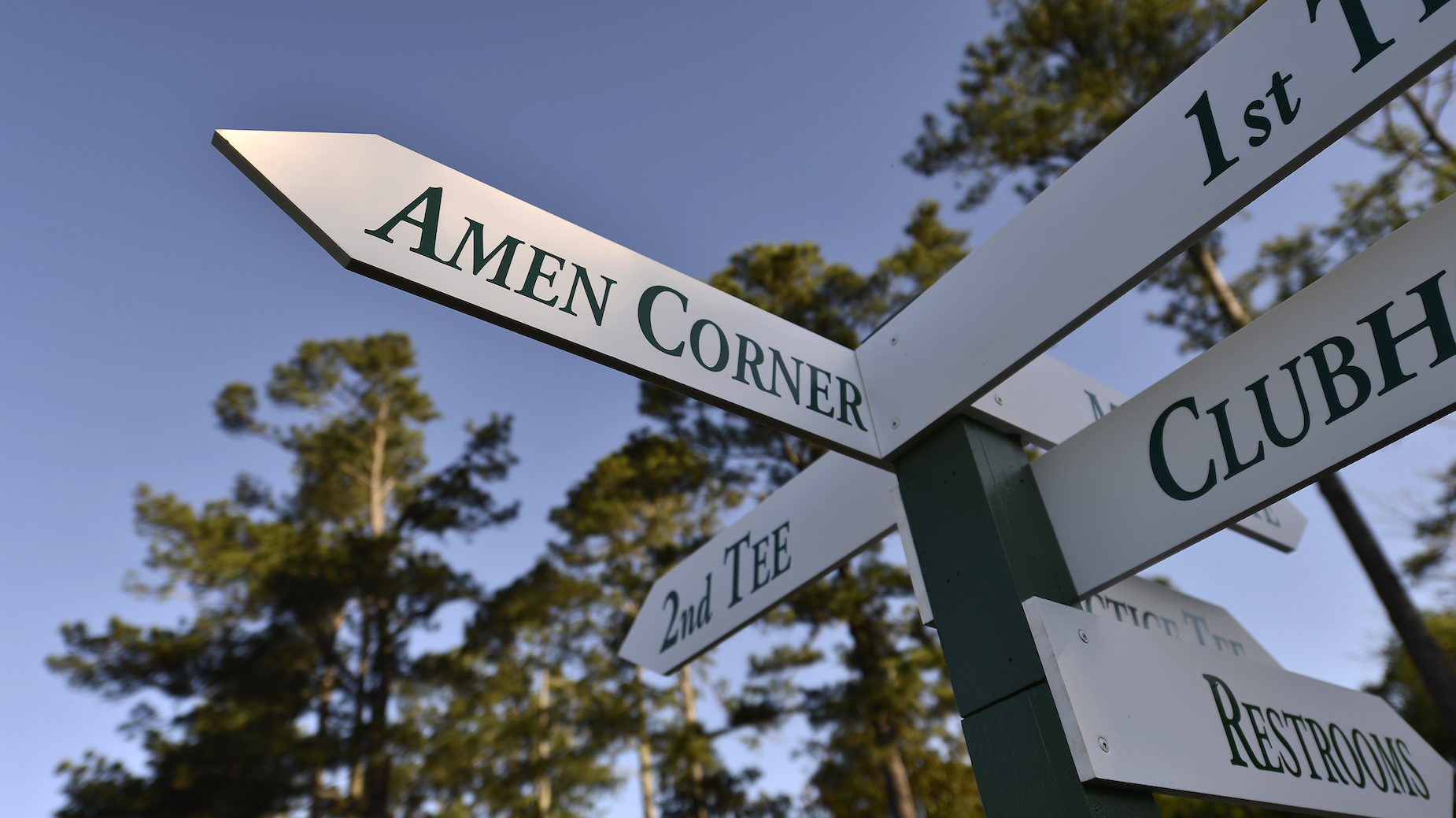Golf
What Is Amen Corner at the Masters and How Did It Get Its Name?

In the world of sports, certain names take on a life of their own. Eldrick Woods sounds like an ordinary man; Tiger Woods, however, is a force to be reckoned with. The same is true at Augusta National, where the 11th, 12th, and 13th holes have taken on a life of their own. As any serious fan of The Masters can tell you, that’s Amen Corner.
So how did three holes on the course get that name? As with everything else affiliated with The Masters, there’s a nice chunk of tradition behind the story.
The Masters is chock full of tradition
RELATED: 2020 Masters: Odds, Best Bets, and Longshots to Target at Augusta National
If you’ve ever watched The Masters on TV, then you’re familiar with the phrase, “a tradition unlike any other.” For the folks down at Augusta National, however, that’s not just a marketing slogan; it’s real life.
Augusta formally opened in January 1933, and the first Augusta National Invitational” tournament took place the following year. Short of rebranding as The Masters, not much has changed since then.
While the world of sports is full of pageantry and tradition, The Masters exists in a league of its own. The Green Jacket, for example, has its own unique set of rules; things like the Champions Dinner, the Par 3 Tournament, and caddy attire is dictated by tradition. Even CBS has made a special arrangement with The Masters, allowing the event to air with limited commercials.
Then, there’s Amen Corner.
What is Amen Corner?
RELATED: How Many Holes-in-One Have There Been at The Masters?
If you’re unfamiliar with The Masters, Amen Corner might sound like something completely untethered with the world of golf. In reality, though, it’s referring to a specific stretch of the iconic golf course.
Amen Corner consists of the 11th, 12th, and 13th holes at August National, known as “White Dogwood, “Golden Bell,” and “Azalea,” respectively. Purists, however, contend that it only refers to the latter portion of 11, the entirety of 12, and the opening shots of 13. No matter the specifics, though, Amen Corner can fill even the most seasoned golfer with a mixture of fear and awe.
As laid out by Yahoo’s Jay Busbee, Amen corner has it’s own unique challenges. The holes are all difficult but also have plenty of “risk-reward parameters,” allowing a golfer to climb up or tumble down the leaderboard, depending on their performance. Just ask Jordan Speith about that.
That risk-reward choice is compounded by Amen Corner’s location within a round; golfers start to realize that their time on the course is coming to an end and start taking extra risks, which can lead to a spectacular collapse.
“When you start to see the finish line, you start to worry about mistakes,” performance psychologist Dr. Joe Parent explained. “Right around Amen Corner, your game plan can change, and that’s a very damaging thing. Instead of aggression, players start playing not to make a mistake. Swings become tentative, shots drift off target, putts roll too far or not far enough.”
How did Amen Corner get its name?
RELATED: Augusta National’s $26 Million Purchase Could Mean Big Things for The Masters
Now that we’ve established the significance of Amen Corner, there’s one piece of the equation left: how did it get its name?
During the final round of the 1958 Masters, Arnold Palmer was chasing the title. Thanks to an eagle on the 13th hole—and a favorable decision from the rules committee regarding his drop on the 12th—he emerged with the title.
When writing about Palmers’ heroics for Sports Illustrated, Herbert Warren Wind made reference to “the farthest reach of the Augusta National course—down in the Amen Corner where Rae’s Creek intersects the 13th fairway near the tee, then parallels the front edge of the green on the short 12th and finally swirls alongside the 11th green.” From there, the title simply stuck.
But where did Wind get the phrase Amen Corner from? As explained by Golf.com, he “claimed that he’d been inspired by a jazz song called ‘Shouting at Amen Corner,’ by Mezz Mezzrow. But it turns out he’d misremembered the artist. It was actually recorded by Mildred Bailey and the Dorsey Brothers Orchestra in 1933 and carried a slightly different name: ‘Shoutin’ in that Amen Corner.”
Regardless of the details, though, Amen Corner is now a part of The Masters’ tradition.











